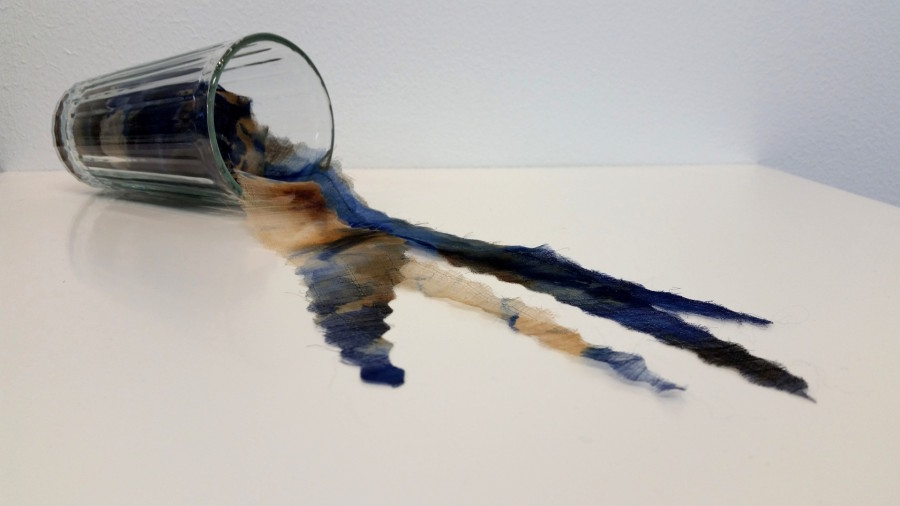
Poisoning Flint

TEXTILE & MIXED MEDIA WORKS
All works are shipped ready to hang. Satisfaction is guaranteed, with a full refund, less shipping costs, if returned within one week of receipt. For information on availability of existing works and current prices or to discuss site specific commissions for corporate, healthcare, public and/or residential interiors please contact the artist at mary@maryvaneecke.com.

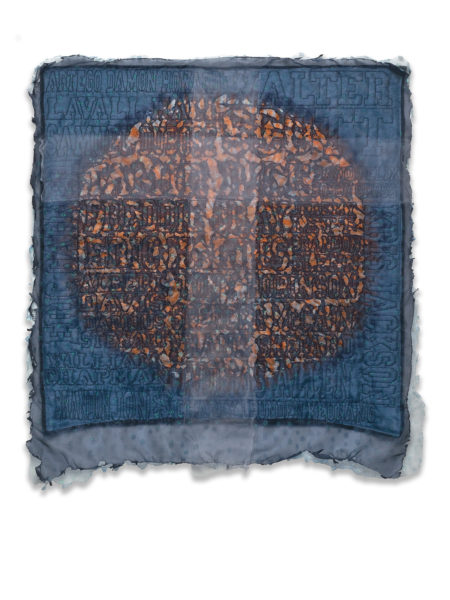

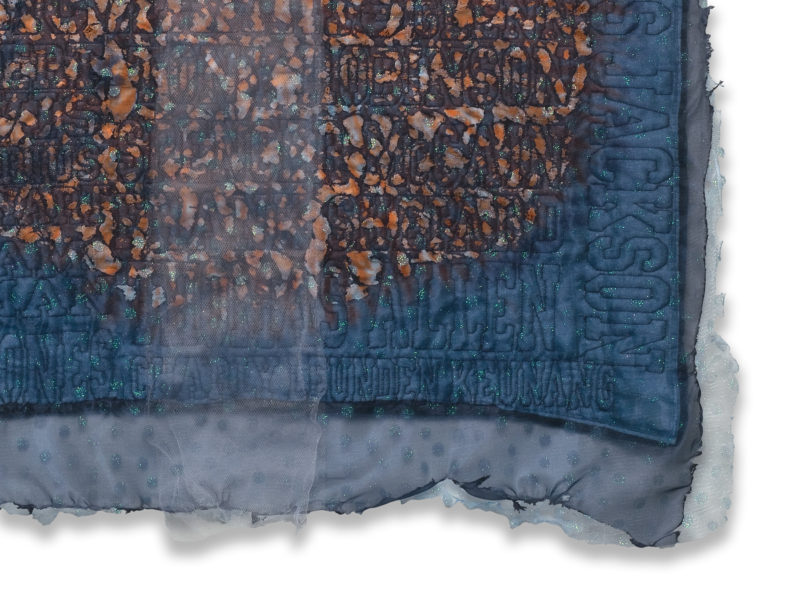

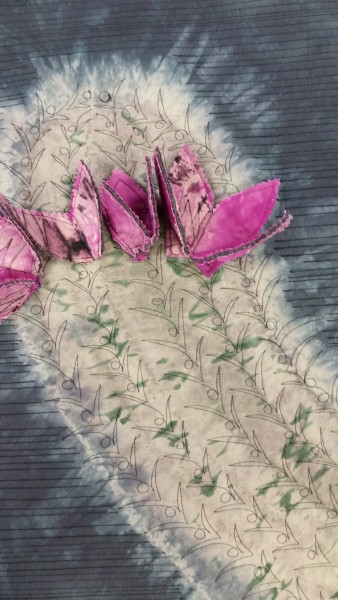
Abuela Reads the Headlines , 2015
Abuela is Spanish for grandmother. I imagine her in her barrio (neighborhood) garden in my hometown, Tucson, surrounded by an ocotillo (a living, cactus-type) fence. She has her handwork and the blessed Virgin of Guadalupe nearby, with a grandchild at her knee. Abuela scans the headlines about America’s current immigration policy, and weeps.
Materials: vintage handworked textiles (makers unknown), felted wool, embellishing (480 jewelry spikes), cotton and cotton-silk fabric, dyeing, discharging, silk sari ‘yarn,’ window screen, acrylic felt, embellishments (milagros and crystal rosary), synthetic organza.
Techniques: dyeing, heat and chemical burning, wet felting, hand stitching, couching, machine stitch, discharging, devore, dyeing, cutting.

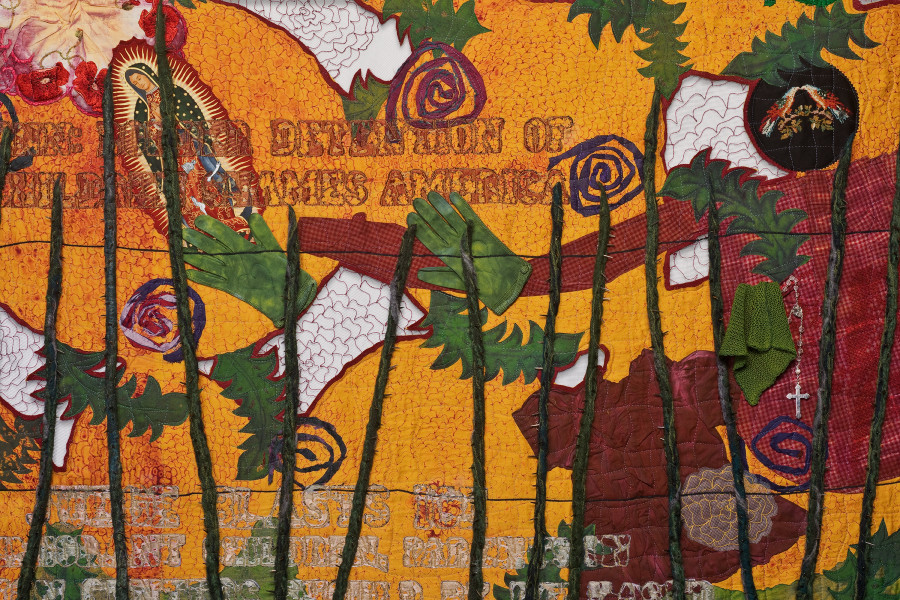
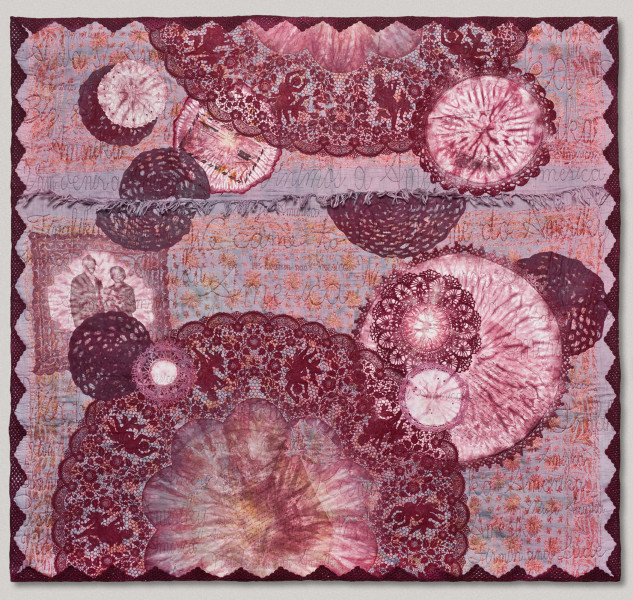
We Came to America
My paternal grandparents, Firmin and Lucie VanEecke, lived the great American Dream. I have long let a quilt in their honor ‘percolate’ in the back of my mind. They met and married in Belgium between the World Wars and came here in 1923 by ship, as millions of immigrants have done throughout our history. World War I decimated Belgium, and they sought a better life here while feeling the separation and loss of loved ones left behind, most of whom they never saw again. Lucie and Firmin flourished in the US, had five children, nine grandchildren, and many great-grandchildren. This work features hand-dyed vintage lace textiles, copies of their last letters home (in Flemish), and their wedding portrait. The piece is quilted with the phrase We Came to America in the languages of many other immigrants who came to America. In a private collection.

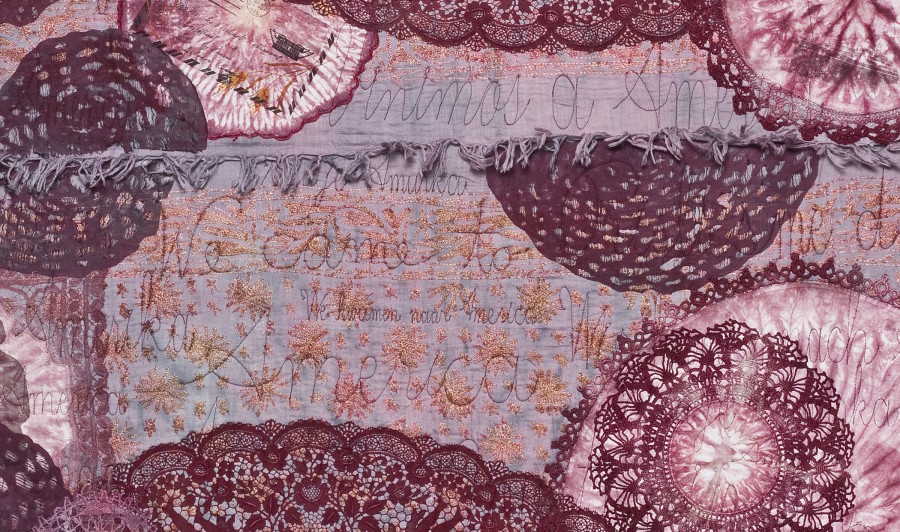
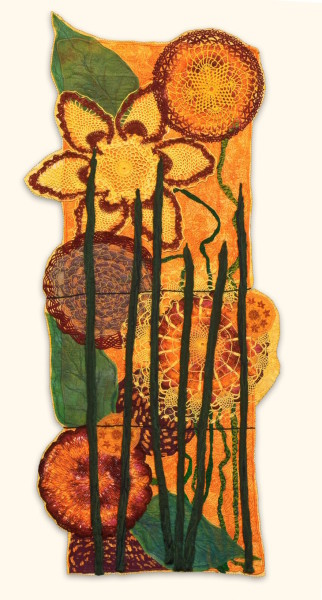
Abuela’s Garden, 2015
The Barrio Viejo (old neighborhood) of my hometown is home to many Mexican immigrants. Their distinctive gardens are often surrounded by an ocotillo fence, a living fence made of a cactus-like plant. The gardens will contain flowers like marigolds and sunflowers, and foods that remind residents of home. Neighbors share seeds and cuttings, and other fruits of their labor. What a lovely metaphor for migration and transplantation.
Materials include hand-dyed and painted handmade textiles (makers unknown), felted wool ropes, new fabrics, silk sari ‘yarn,’ window screen, felt, and machine stitch. In a private collection.

This piece is inspired by the basket weaving patterns of the indigenous peoples along the Santa Cruz river, where I live in Arizona. Techniques include katano shibori, discharge, dyeing, burning, trapunto, and machine stitch.
Another improvisationally pieced ‘modern quilt’ to go with a dining theme. Its sister quilt, Chopsticks and Edamame is here. The digitized quilting design is based on a traditional sachiko design called steam or fishing net.
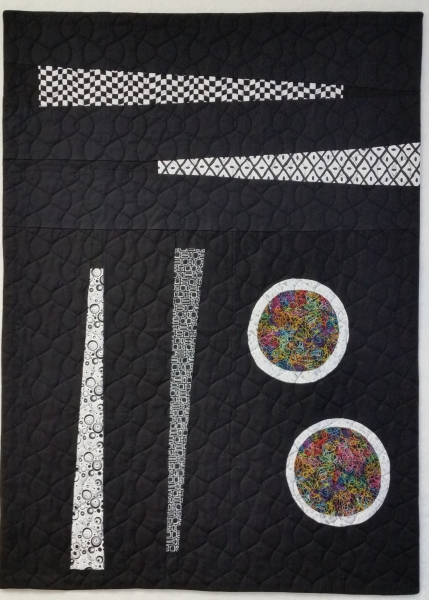
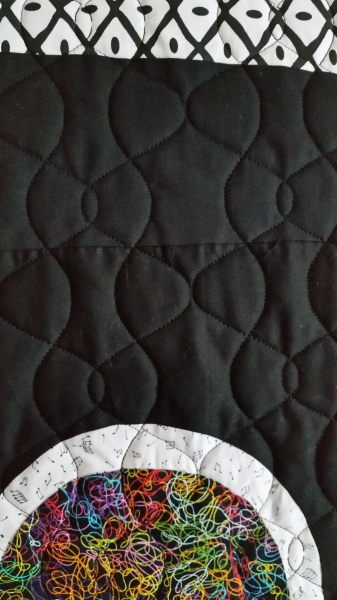
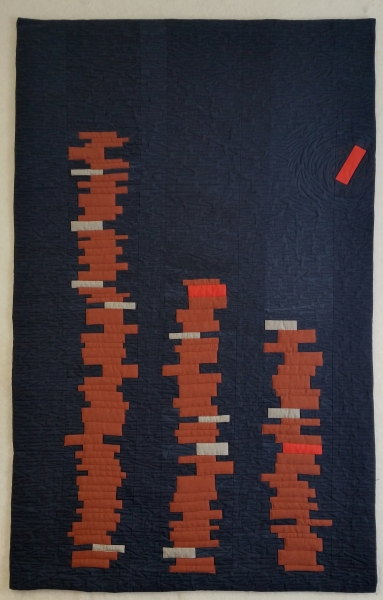
This quilt is inspired by the wonderful fabrics (a shot cotton in burnt orange, and a navy New Aged Muslin by Marcus Brothers) and the traditional quilt pattern Chinese Coins. A link to a 1940s Amish version is here. I call it Coin Toss, and every time I think of the name, I want to ask, What’s the most you ever lost on a coin toss?
The use of negative space and plain fabrics just begs for fabulous quilting, and I tried to keep the tension of the perilously stacked coins going with the navy-on-navy background quilting.

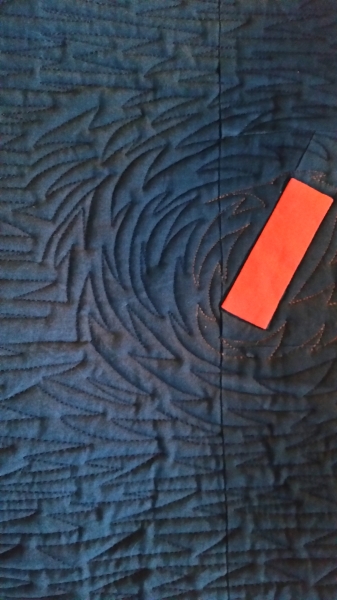
A link to the thoughtful and perceptive review of the SAQA-AZ Journeys show by CJ Shane is here. The show runs through December 10 at the Tucson Jewish Community Center.

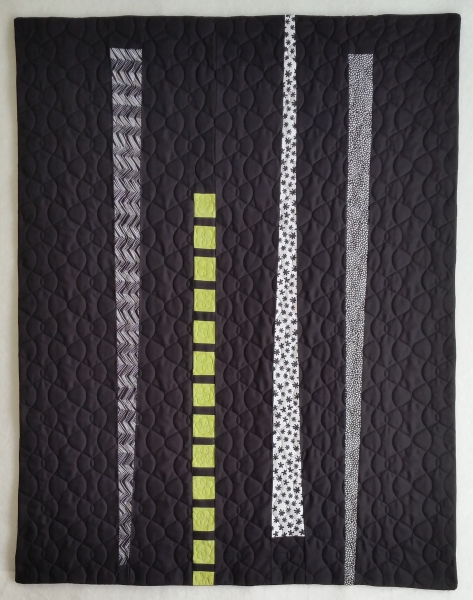
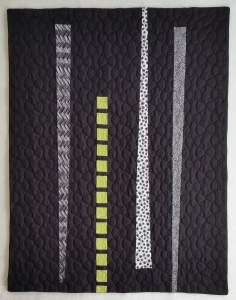
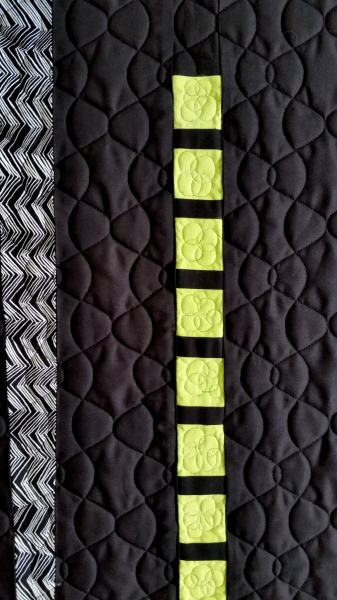
This piece is another of my ‘Modern’ quilts. It features commercial fabrics and improvisational piecing. The digitized quilt design in the black areas is based on a traditional Japanese sachiko pattern called ‘steam.’ Edamame are steamed fresh soybeans. I think there is a Pad Thai quilt in my future!
Chopsticks and Edamame will be part of the Studio Art Quilt Assciates’ Food for Thought exhibition. The show will debut at the National Quilt Museum, Paducah, Kentucky, in April 2015 and will then travel to the Festival of Quilts in Birmingham, England, in August, 2015.
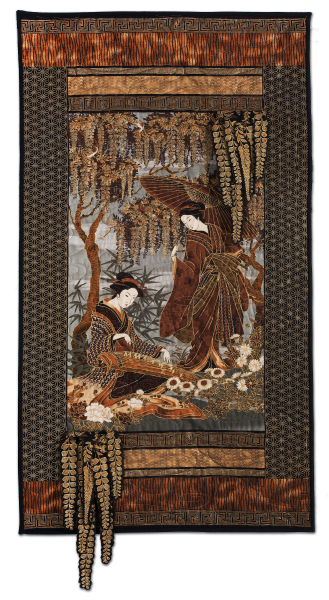
I used my 3-D technique on this elegant Asian panel and coordinating fabric to create wisteria vines draping off the quilt. Find out how in my book, Wild and Wonderful 3-D Quilts.
This whimsical piece uses my 3-D art quilt technique with commercial fabrics. I call it It’s a Jungle Out There. See this art quilt in IQA’s show in Houston in Fall 2015 as part of the SAQA travelling ‘Wild Fabrications’exhibition . You can learn these techniques in one of my classes, or in my upcoming book, Wild and Wonderful 3-D Quilts.
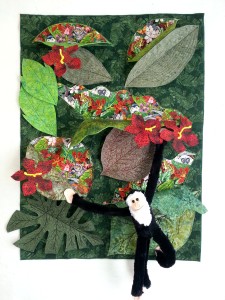
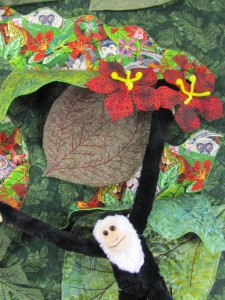
I love the so-called ‘Modern Quilt’ aesthetic: clean design lines, simple fabrics, negative space (=quilting space, IMHO). This is my first attempt at such a piece. It is raw-edge fusible applique on a field of gray muslin. Yes, I cut a hole in it. I call it Modern Love.
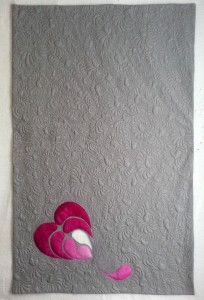
The Radical Elements show is in Washington D.C. today at the National Academy of Sciences. A link to information on the current venue is here. Since the embargo on publishing photos of the works has been lifted, I can post a full view of the piece now. Drum roll please….
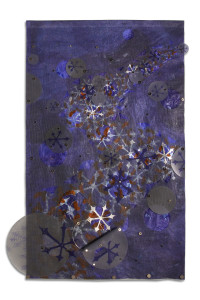
Painted archival Tyvek embedded with silk fibers and medical gloves, layered with window screen with acrylic paint and medium screened into it. The piece features cutouts and a 3D element, an S curve composition, and is quilted with magnets. Embellished with electric guitar strings.
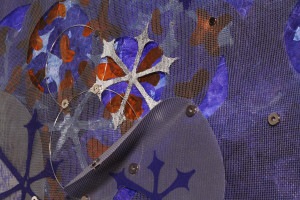
Samarium 62: No Relation. This piece is part of the Studio Art Quilt Associates’ Radical Elements invitational exhibition. A photo of the entire work is embargoed until its debut exhibition in May 2014. It is made from materials other than fabric and thread, and ‘quilted’ with magnets. The piece overlaps two series: Samaras and Circlesss.
